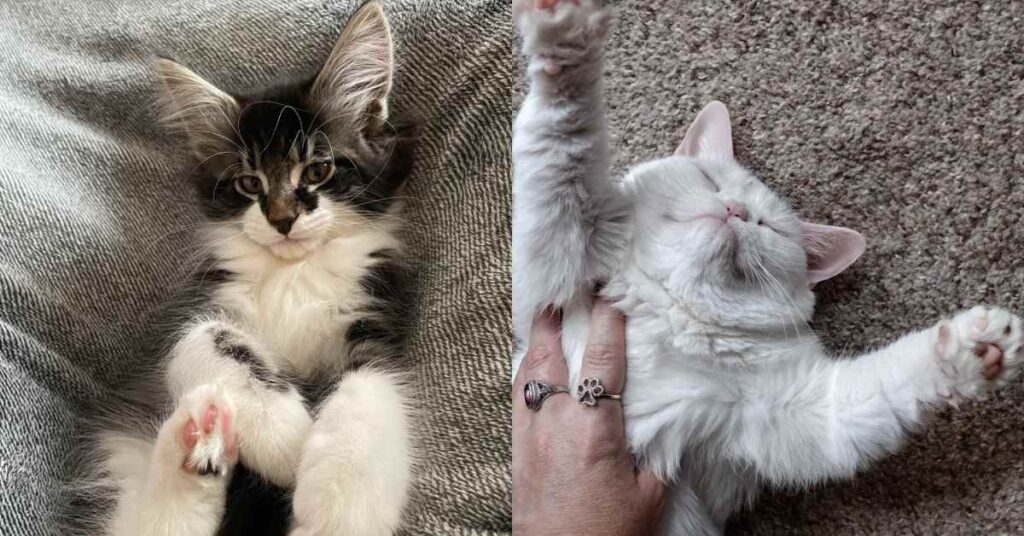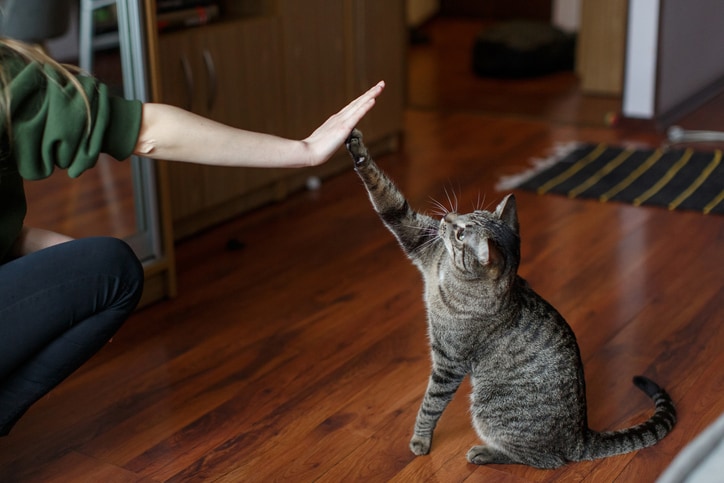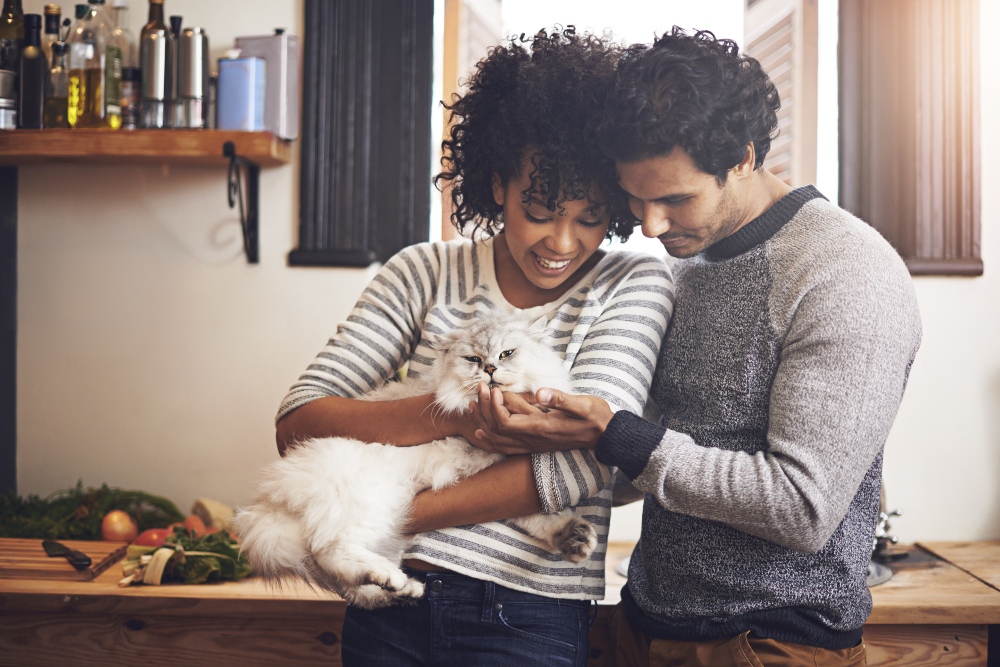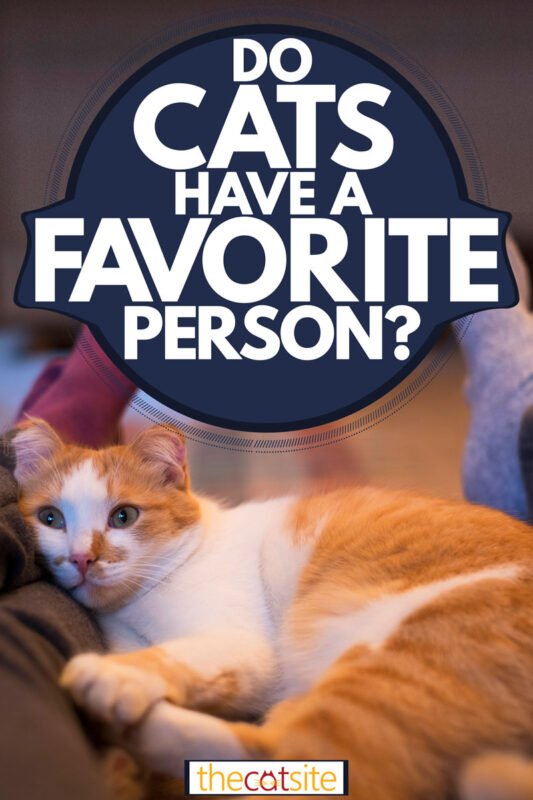Do you ever wonder if your cat has a favorite person? As cat owners, we often find ourselves wondering if our feline companions have a preference when it comes to human interaction. While cats may not express their affection in the same way as dogs, there are subtle signs that can indicate whether they have a favorite human. From seeking out your company to displaying certain behaviors, this article explores the fascinating question of whether cats truly have a favorite person.
Understanding Cat Behavior
Cats are mysterious creatures, known for their independence and aloofness. However, understanding their behavior is essential for providing them with the best care and maintaining a harmonious relationship. By delving into the intricacies of cat behavior, we can decode their actions and better meet their needs.
Importance of studying cat behavior
Studying cat behavior is crucial for several reasons. Firstly, it allows us to interpret their emotions and recognize signs of stress or discomfort. By being attuned to their needs, we can ensure their well-being and prevent unnecessary anxiety. Secondly, understanding their behavior helps us communicate with them effectively, strengthening the bond between the cat and its caregivers. Lastly, studying cat behavior offers insights into their evolutionary history, shedding light on their instincts and natural behaviors.
Common behaviors and their meanings
Cats exhibit a diverse range of behaviors, each with its unique meaning. Some common behaviors include purring, rubbing against objects or people, kneading, and grooming. Purring is often associated with contentment and relaxation, while rubbing against objects is a way for cats to mark their territory and leave their scent. Kneading, commonly observed in kittens, is a behavior reminiscent of the instinct to nurse, signaling comfort and relaxation. Grooming, besides maintaining cleanliness, is a way for cats to bond with one another and show affection.
Behavior differences among different breeds
While cats share common behaviors, there can be variations among different breeds. Some breeds, such as the Siamese, are known for their talkative nature and demand for attention. On the other hand, breeds like the Maine Coon tend to be more laid-back and independent. These breed-specific differences stem from both genetics and individual personality traits. Understanding the unique behaviors of specific breeds can help cat owners appreciate and accommodate their cats‘ needs.
Cats and Attachment
Understanding how cats form attachments is key to establishing a strong bond and fulfilling their emotional needs.
Exploring the idea of pet attachment
Attachment refers to the emotional bond formed by an animal with its caregiver. While traditionally associated with dogs, recent studies suggest that cats also form attachments with their human companions. This attachment extends beyond their need for food and shelter, demonstrating a deeper emotional connection.
How cats develop attachments
Cats develop attachments through a combination of factors. Regular positive interactions, such as playtime, grooming, and feeding, contribute to the strengthening of the bond. Consistency and predictability, including routine care and attention, help build trust and security. Additionally, cats often form attachments based on the quality of their past experiences and socialization. Cats who have received proper socialization from an early age are more likely to form secure attachments with their humans.
Difference between cats and dogs in terms of attachment
While dogs are known for their unwavering loyalty and dependence on their human companions, cats tend to exhibit a more independent nature. Cats often value their freedom and may display more variability in their attachment behaviors. However, this does not mean that cats are incapable of forming strong attachments. Cats may show their attachment through subtle cues, such as seeking physical contact or vocalizing in the presence of their favorite person.

Factors Influencing Cat Preferences
Understanding the factors that influence cat preferences can help us create an environment where they feel comfortable and valued.
Physical factors
Physical factors play a significant role in shaping a cat’s preferences. Each cat has its preferred type of petting or scratching, and understanding their individual preferences can strengthen the bond between the cat and its caregiver. Additionally, factors such as age, health, and sensory sensitivities can impact a cat’s preference for certain individuals.
Emotional factors
Cats are highly perceptive and can sense the emotional state of their caregivers. They may develop preferences for individuals who provide a calm and nurturing environment. Cats often seek comfort and safety, which can be influenced by their perception of their caregiver’s emotional state.
Environmental factors
The environment in which a cat lives can greatly impact their preferences. Factors such as the presence of other pets, the layout of the living space, and the availability of resources can influence a cat’s choice of favorite person. A peaceful and enriched environment, tailored to the cat’s needs, can foster positive interactions and strengthen the bond between the cat and its favorite person.
Role of Caregivers in Cat Preferences
As caregivers, we play a crucial role in shaping our cat’s preferences and overall well-being.
Effect of feeding routines
Feeding routines can significantly impact a cat’s preferences. Cats are generally more inclined to form attachments with individuals who provide them with food. By establishing a consistent feeding routine, we can reinforce positive associations and build trust with our feline companions.
Impact of grooming practices
Grooming plays a vital role in maintaining a cat’s physical and mental well-being. Regular grooming sessions not only keep the cat’s coat clean but also provide an opportunity for bonding. Engaging in gentle and relaxing grooming practices can help strengthen the bond between the cat and its favorite person.
Value of play and interaction
Play and interaction are essential for a cat’s physical and mental stimulation. Engaging in regular play sessions and interactive activities with your cat promotes positive associations and strengthens the bond between the cat and its caregiver. By providing enriching and engaging experiences, we can become our cat’s favorite person.

Signs Your Cat Has A Favorite Person
Cats may display various signs indicating that they have a favorite person. Being aware of these signs can help us understand the depth of our cat’s attachment and provide the care they need.
Physical signs of affection
Cats often show physical signs of affection towards their favorite person. These signs may include rubbing against their legs, purring loudly, or nuzzling their face against their favorite person’s. Seeking physical contact and displaying relaxed body language are common indicators of a strong bond.
Behavioral signs
Behavioral signs also reveal a cat’s preference for a particular person. A cat may follow their favorite person around the house, vocalize more frequently when that person is present, or seek out their company during quiet moments. Paying attention to these behavioral cues can help us recognize our cat’s favorite person.
Time and space-sharing
Cats often choose to spend a significant amount of time with their favorite person, seeking out their company and sharing personal space. Your cat may choose to nap near you, curl up in your lap, or join you in your daily activities. When a cat consistently chooses to be close to a specific individual, it is a clear sign of preference.
Why Some Cats Seem to Not Have a Favorite Person
While many cats display a clear preference for a favorite person, some cats may appear to have a more independent nature. Several factors can contribute to why certain cats don’t seem to have a favorite person.
Lack of socialization
Cats that have not been adequately socialized during their early development stages may struggle to form strong attachments with humans. Insufficient exposure to positive experiences and a lack of interaction with diverse individuals may hinder their ability to develop a preference for a favorite person.
Previous trauma or negative experiences
Cats that have experienced trauma or negative experiences in the past may be more hesitant to form close attachments. This could be due to fear or anxiety associated with certain individuals or environments. Patience, understanding, and consistent positive interactions can help rebuild trust and potentially foster a preference for a favorite person over time.
Individual personality traits
Just like humans, cats have unique personality traits that influence their interactions and preferences. Some cats are simply more independent by nature and may not exhibit a strong preference for a specific person. These cats may enjoy the company of various individuals and seek attention and affection from multiple sources.

Scientific Studies on Cat Preferences
Scientific studies have been conducted to explore and understand cat preferences, shedding light on the complexities of feline-human relationships.
Overview of existing studies
Several studies have focused on deciphering cat preferences and attachment behavior. These studies utilize various methods, including behavioral observations, questionnaire surveys, and physiological measurements, to gather insights into the bond between cats and their favorite person.
Key findings
Research suggests that cats have the capacity to form secure attachments with their human caregivers. While their attachment style may differ from that of dogs, cats show behavioral and physiological responses that indicate the presence of a bond. Furthermore, studies have shown that positive interactions, such as petting and play, contribute to the development of attachment in cats.
Limitations of previous research
Despite the progress made in studying cat preferences, there are still limitations to existing research. Sample sizes may be small, limiting the generalizability of the findings. Additionally, understanding the intricacies of feline emotions and preferences remains a challenge, as cats are often more subtle in their cues compared to other animals.
The Effect of a Cat’s Favorite Person on Other Pets
When a cat has a favorite person, it can have implications for the dynamics within a multi-pet household.
Possibility of jealousy or competition
Other pets in the household may experience feelings of jealousy or competition when a cat displays a clear preference for a specific person. This can lead to tension or increased rivalry among the pets. It’s essential to provide each pet with individual attention and ensure they feel valued to mitigate potential conflicts.
How other pets may react
The reactions of other pets in response to a cat’s favorite person can vary. Some pets may feel threatened or excluded, leading to behavioral changes such as increased aggression or withdrawal. Other pets may be indifferent or even relieved to have a break from the cat’s attention. Careful observation and proactive management can help maintain a harmonious environment among all the pets.
Ways to manage multi-pet households
To promote a harmonious multi-pet household, it is crucial to provide each pet with individual attention, love, and care. Ensuring that each pet’s needs are met and allowing for separate bonding time can prevent feelings of exclusion and reduce the likelihood of tension between pets. Structured play sessions and positive reinforcement training can also help create a peaceful coexistence.

Impact of a Cat’s Preference on the Family
When a cat has a favorite person, it can sometimes create a sense of favoritism within the family dynamic.
Sense of favoritism in the family
Family members who are not the cat’s favorite person may feel a sense of favoritism, which can potentially lead to hurt feelings or misunderstandings. It’s important to communicate openly and foster an environment of understanding, emphasizing that each family member plays a unique role in the cat’s life.
How different family members might feel
Family members who do not share the same preferred status as the cat’s favorite person may feel a range of emotions, including jealousy, disappointment, or even relief, depending on their individual dynamics with the cat. Open and honest communication within the family can help address these feelings and promote a supportive and inclusive environment.
Tips for ensuring all family members bond with the cat
Encouraging all family members to actively engage with the cat can help strengthen individual bonds. Each family member can participate in activities such as feeding, grooming, playtime, and providing affection to develop their relationship with the cat. By emphasizing the importance of collective involvement, the family can ensure that everyone feels valued and connected to the cat.
Fostering a Strong Bond with Your Cat
Building a strong bond with your cat requires time, patience, and understanding.
Building trust with your cat
Trust is the foundation of any strong relationship, and it is no different when it comes to cats. Building trust involves providing a safe and nurturing environment, respecting their boundaries, and consistently meeting their needs. By creating an atmosphere of trust, you can establish a solid foundation for a strong bond.
Maintaining a healthy relationship
Maintaining a healthy relationship with your cat involves regular care, attention, and affection. Establishing a routine that includes playtime, grooming, and quality time together can help strengthen the bond over time. Consistency in your interactions and responsiveness to your cat’s needs is key to fostering a positive connection.
Activities to strengthen the bond
Engaging in activities that promote interaction and positive experiences can strengthen the bond with your cat. This can include interactive play sessions, puzzle toys, and training exercises. Exploring new environments together, such as supervised outdoor adventures or designated cat-friendly spaces indoors, can also provide opportunities for shared experiences and bonding.
In conclusion, understanding cat behavior is vital for creating a strong bond and ensuring the well-being of our feline companions. By studying their behavior and preferences, we can navigate the intricacies of their attachments, provide suitable environments, and foster healthy relationships. Through attentive caregiving, we can become our cat’s favorite person and enrich their lives, as they enrich ours with their unique personalities and feline charm.

